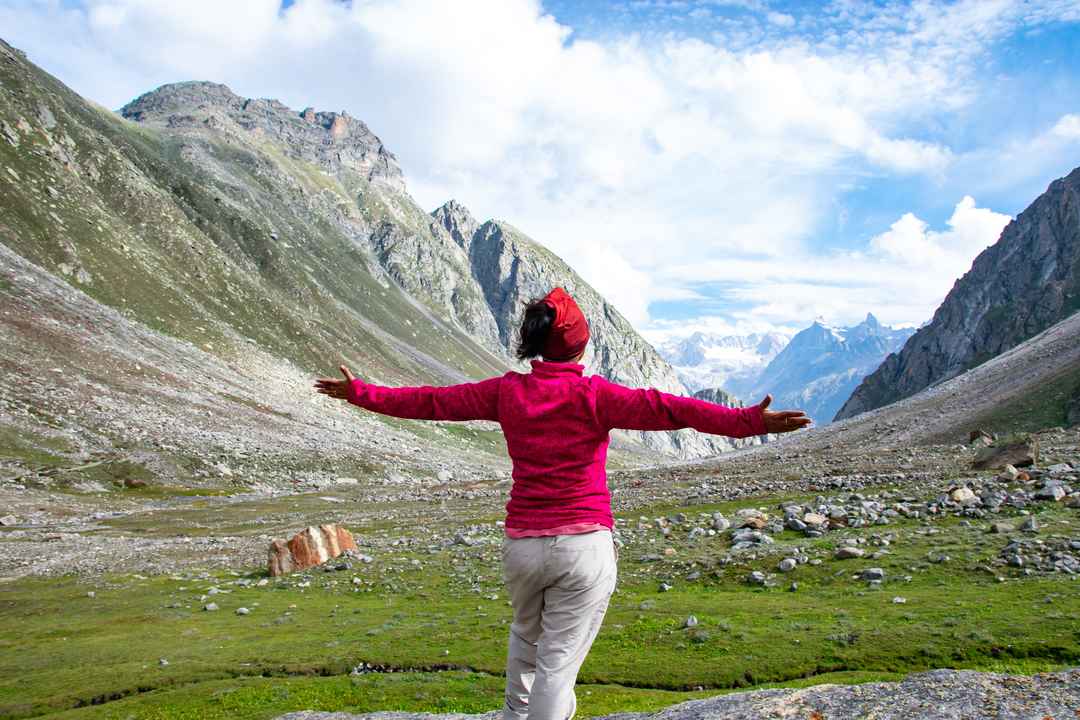Hampta Pass with Chandratal Lake Trek – A 5-Day Himalayan Story You’ll Never Forget

This trek is a five-day journey through changing landscapes and shifting emotions. With every step, nature surprises you — playful one moment, wild the next — always stunning in its raw beauty.
This adventure, brought to life by Himalayan Frontiers — a name locals and trekkers trust deeply — is perfect whether you’re lacing up your boots for the first time or returning to the trails you love. It’s not extreme, but it’s no walk in the park either — just enough of a challenge to make the views and stories you take home feel truly earned.
Why This Trek? Why Now?
Here’s the thing: not all treks are created equal. Some offer lush forests, others snowfields, and a few, stark high-altitude drama. Hampta Pass gives you all of it — in just five days.
It starts in the green folds of the Kullu Valley. You cross bubbling rivers, sleep under starlit skies, wake up to birdsong. Then the landscape begins to shift. Trees give way to boulders. The air thins. And then, almost suddenly, you’re standing at Hampta Pass — 14,000 feet high — staring down into the vast, barren Lahaul valley.
Just when you think the trek can’t get any better, there’s Chandratal — a high-altitude lake so serene, so unreal, it looks photoshopped in real life.
FOR BOOKINGS CLICK HERE
Where Is Hampta Pass?
Tucked into the Pir Panjal range of Himachal Pradesh, Hampta Pass sits at about 4,300 meters (14,100 feet). The trail begins near Manali, specifically from Jobra, a short drive away. From there, it’s all boots-on-ground, one step at a time.
You don’t need mountaineering skills. You just need a love for the outdoors and the will to walk through landscapes that change almost like chapters in a novel.
Best Time to Go
Mid-June to late September is your golden window.
June: Still snowy, wild and white.
July: Meadows come alive. Flowers bloom. Rivers swell.
August–September: Weather stabilizes. Chandratal becomes more reliably accessible.
If you’re hoping to dip your toes (figuratively) into trekking but still crave adventure, August or early September is the sweet spot.
The Journey – Day by Day
Let’s walk through the experience.
Day 1: Manali to Jobra, then Trek to Chika
You drive out of Manali — the bustle fades fast. By the time you reach Jobra, you’re already in mountain mode. The trek begins through whispering woods, with the sound of the Rani Nallah beside you. You camp at Chika, a grassy clearing surrounded by tall cliffs.
Walking time: 2–3 hours
Altitude: 10,000 ft
Day 2: Chika to Balu Ka Ghera
Now the landscape opens up. You walk through flower-filled meadows, hop across glacial streams, and get your first taste of altitude. The name “Balu Ka Ghera” means ‘bed of sand’, but it’s more of a moonscape with big rocks and a roaring stream.
Walking time: 5–6 hours
Altitude: 12,000 ft
Day 3: Balu Ka Ghera to Hampta Pass to Shea Goru
This is the big day. You start early. The climb is steady, and the air gets thinner. Eventually, you reach Hampta Pass. It’s windy. Raw. Unbelievably beautiful. You’ll want to take a hundred photos — and maybe one long moment to just stand still.
The descent into Shea Goru shows you a completely different world: barren, brown, Martian almost.
Walking time: 7–8 hours
Altitude: 14,100 ft
Day 4: Shea Goru to Chatru, Drive to Chandratal
You descend through scree and rock, past waterfalls spilling from cliffs. You reach Chatru, where three valleys meet. If the roads are open and weather kind, a vehicle will take you to Chandratal — the Moon Lake. There, at 4,300m, you’ll find a turquoise mirror nestled in rock and sky.
Walking time: 4–5 hours + drive
Optional stay: Near Chandratal (camps or vehicles)
Day 5: Chandratal to Manali
A long but scenic drive back to Manali, through the Atal Tunnel or over Rohtang Pass depending on the route. You’ll arrive tired, maybe dusty — but glowing with satisfaction.
What’s Included with Himalayan Frontiers
With Himalayan Frontiers, you’re in good hands. Their trek packages typically include:
Transport from Manali to trek start and back
All meals during the trek (vegetarian)
High-quality tents, sleeping bags, and mats
Local guides with high-altitude experience
All necessary permits
First-aid and oxygen support
Optional:
Trip to Chandratal Lake
Porter services for extra luggage
Hotel stays before/after trek
FOLLOW US ON INSTAGRAM
What You Need to Know
Fitness: You should be able to walk 6–7 hours daily with a daypack. Some basic cardio prep before the trek helps.
Acclimatization: Spend at least a day in Manali before you start.
Connectivity: Mobile network disappears after Jobra. Consider this a digital detox.
Weather: Pack for all seasons — sun, rain, cold. Weather changes fast in the mountains.
Packing Checklist
Here’s a quick list of must-haves:
Sturdy trekking shoes (broken in)
Warm layers (base, fleece, waterproof outer)
Gloves, cap, socks
Sunglasses and sunscreen
Water bottle (reusable)
Rain cover (for bag and self)
Personal meds and basic toiletries
Power bank and torch
Why Trek with Himalayan Frontiers?
There are many operators, but Himalayan Frontiers stands out for one big reason — they care. Not just about logistics and safety (which they nail), but about giving you an authentic, immersive experience. Their guides are local, experienced, and genuinely invested in the mountains and your time there.
You’re not just a number in a group — you’re a traveler, a learner, and part of the story they’ve helped shape for decades.




